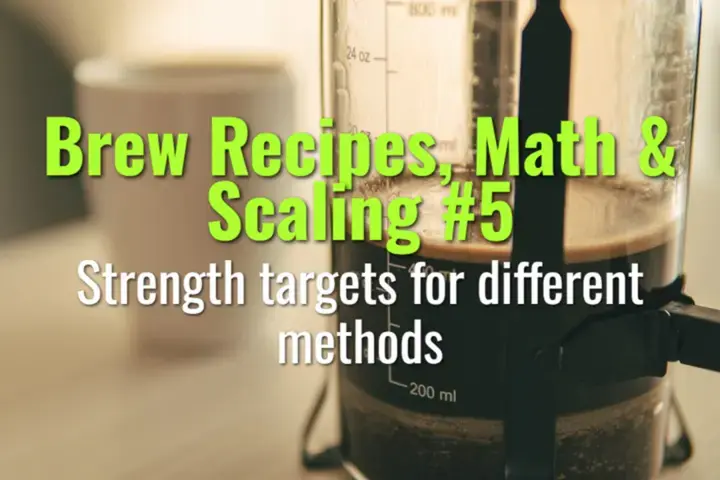Strength targets for different methods
Typical strength targets (TDS ranges) for different brewing methods, and why each method has its own ideal balance.
- Coffee Basics Nerds
- 2 min read
Article 5 of 12 in Brew Recipes, Math & Scaling/

What is Strength?
- Defined as Total Dissolved Solids (TDS) percentage in the beverage.
- Higher TDS = stronger, more concentrated coffee.
- Perceived as body, intensity, and heaviness in the cup.
Typical Targets by Method
- Filter Coffee (Pour-Over, Batch Brew): 1.15 – 1.35% TDS (SCA Golden Cup standard).
- Immersion (French Press, Clever): 1.20 – 1.40% TDS; slightly higher for full-bodied brews.
- Espresso: 8 – 12% TDS (depending on dose, ratio, and recipe).
- Ibrik (Turkish Coffee): 4 – 6% TDS; suspension-based, very strong.
- Cold Brew Concentrate: 4 – 8% TDS, diluted to 1.2 – 2% for serving.
- Moka Pot: 2 – 4% TDS; stronger than filter, weaker than espresso.
Why Targets Differ
- Brewing Method Mechanics:
- Filter brews dilute solubles in larger water volumes.
- Espresso extracts under pressure, yielding concentrated shots.
- Immersion retains more suspended solids, increasing strength perception.
- Cultural Preferences:
- Some traditions favor intensity (ibrik, Cuban cafecito).
- Others emphasize balance and clarity (pour-over).
Practical Use
- Strength targets guide recipe development and QC.
- If coffee tastes too strong or weak, measure TDS and adjust ratio.
- Targets are guidelines—sensory preference may call for variation.
Summary
Each brewing method has its own strength target: filter ~1.2%, espresso ~9%, Moka pot ~3%. Understanding these ranges helps baristas and home brewers dial in recipes that match both scientific standards and cultural expectations.